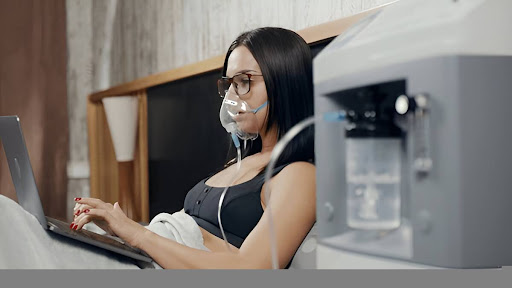If you have been diagnosed with a respiratory condition, you’ve probably heard the term home oxygen therapy more than a few times. Maybe your doctor mentioned it in passing. Maybe you’ve seen those sleek, portable oxygen concentrators online or in medical supply stores. But what exactly does it mean to use one at home, and more importantly, how can it help?
Let’s walk through it together in simple terms.
What Is Home Oxygen Therapy?
Home oxygen therapy is exactly what it sounds like: getting supplemental oxygen in the comfort of your own home. It’s commonly recommended for people with chronic conditions that make it hard for the lungs to absorb enough oxygen, things like COPD (chronic obstructive pulmonary disease), pulmonary fibrosis, severe asthma, or even long-term effects of COVID-19.
Instead of frequent hospital visits or using bulky oxygen tanks, many patients are now turning to a more modern, convenient solution: the oxygen concentrator.
So, What Is an Oxygen Concentrator?
Think of an oxygen concentrator as a small, smart machine that pulls in air from the room, filters out nitrogen, and delivers purified oxygen through a tube or nasal cannula. It doesn’t store oxygen the way traditional tanks do, it creates it on demand. That means no refills, fewer risks, and a lot more independence.
The Real-Life Benefits of Home Oxygen Therapy
Here’s where things get personal. For families living with chronic respiratory illness, quality of life can take a hit. Fatigue, shortness of breath, and anxiety are everyday battles. Home oxygen therapy can make a huge difference, not just for the patient, but for caregivers too.
Let’s break down the key benefits:
✅ 1. Breathe Easier, Literally
This one might be obvious, but it’s the most important. When your body doesn’t get enough oxygen, your brain, heart, and muscles have to work overtime. Oxygen therapy helps improve:
- Energy levels
- Mental clarity
- Sleep quality
- Exercise tolerance (yes, even short walks can get easier)
2. Comfort at Home
Going out for treatment can be exhausting. With an oxygen concentrator at home, patients can rest and recover in their own space, on their schedule, not a hospital’s.
3. More Freedom and Mobility
Portable oxygen concentrators have come a long way. Some models are lightweight and battery-operated, so you can use them while walking the dog, running errands, or even traveling. It gives people their independence back.
4. Reduced Anxiety and Better Mental Health
Feeling like you can’t catch your breath is terrifying. Knowing that oxygen is available when needed can reduce panic attacks, lower stress levels, and help people feel more secure, emotionally and physically.
5. Cost-Effective Over Time
Compared to the ongoing cost of oxygen tank refills and frequent hospital visits, concentrators are a one-time investment. Some insurance providers may even cover part of the cost.
Is It Right for You?
That’s a conversation worth having with your doctor or pulmonologist. They’ll assess blood oxygen levels (often with a simple pulse oximeter) and recommend a setup that fits your needs.
Not everyone with a respiratory condition needs full-time oxygen. Some might use it only during sleep or after physical activity. Others might need continuous support. The beauty of home oxygen therapy is its flexibility.
What to Look for in a Home Oxygen Concentrator:
If you’re thinking of getting one, consider:
- Flow rate (How much oxygen does it deliver?)
- Portability (Will you need to travel with it?)
- Noise level (Some machines are quieter than others)
- Battery backup (In case of power outages)
- Maintenance needs (Cleaning filters, replacing parts)
Final Thoughts
Home oxygen therapy is more than a prescription, it’s a powerful step toward regaining comfort, confidence, and control over your daily life. Whether you’re navigating a chronic respiratory condition, understanding the benefits of oxygen concentrators can open the door to more restful nights, more active days, and fewer hospital trips.
If you’re considering one, explore trusted sources like HospitalStore.com, talk to your doctor, and take that first breath toward better care at home.








